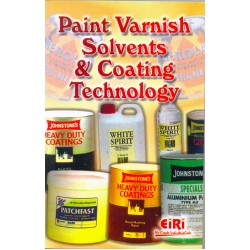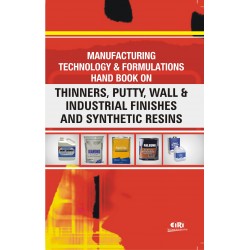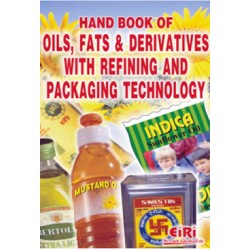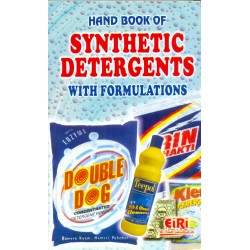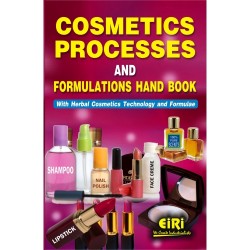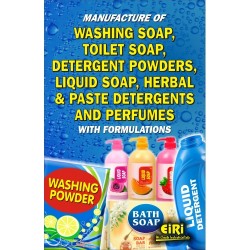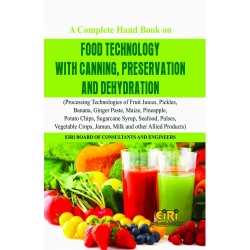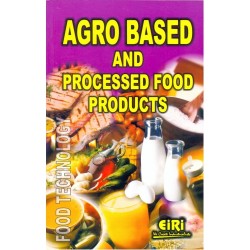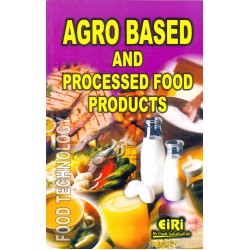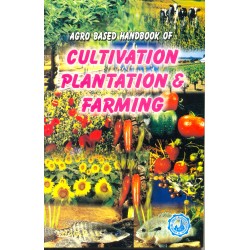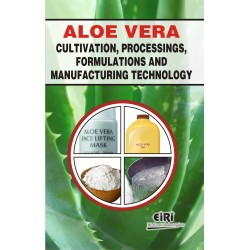hand book of leather and leather products technology

- More than 40 years of experience
- Managed by expert industrial consultants
- ISO 9001-2015 Certified
- Registered under MSME, UAM No: DL01E0012000
- 24/5 Research Support
Get your quesries resolved from an industry expert. Ask your queries before report or book purchase. - Custom Research Service
Speak to the our consultant to design an exclusive study to serve your research needs. - Quality Assurance
All reports are prepared by highly qualified consultants & verified by a panel of experts. - Information Security
Your personal & confidential information is safe & secure.
HAND BOOK OF LEATHER AND LEATHER PRODUCTS TECHNOLOGY
LEATHER PROCESSING
- Introduction
- Leather:Braving New Material World
- Leather: Changing Demand Pattern
- Customer Driven Changes of Market Economy Models
- Driving Factors in Manufacturing
- Driven by Access to Materials
- Driven by Access to Market
- Driven by Access to Technologies
- Innovation Driven Manufacturing
- Global Leather Processing Practices Influencing Issues
- Linkages to Down Stream Industries
- External Pressures from Environmental Perspectives
- Cost Compulsions
- Change Paradigms in Leather Processing
- Atom Efficiences
- Material Productivity Time and Labour Productivity
- Approach Paradigms in Leather Processing
- Biotechnology for Leather
- Knowledge Network Approach
- Bio & Ambient Preservation of Skin
- Ambient Preservation of Skin/hide
- Lead Enzymes for Lime and Sulfide free Processing of Skin/hie
- New Substrate for Assaying Enzyme Samples for Application in Leather Sector
- Application of Recombinant DNA Routes for A Lead Enzyme Product
- Lead Enzyme Products
- Some Lead Products Under Commercial Evaluation
- Concluding Remarks
RAW MATERIALS FORLEATHER PROCESSING
- Choice of Raw Material
- Vital Role of Selection
- Variation in Quality
- Ante Mortem Damages
- Post Mortem Damages
- Use of Preservatives
- Classification
- Details of Classification
- Characteristics of Cow Hides of Different Origin
- Agras
- Bihar's cow Hides
- Darbhanga
- Katihar Kishinganj
- Savan Chapra, Purnea Districts
- Patna Districts
- Bihar Shariff Districts
- Gava Districts
- Ranchi District
- Bengal Hides
- Nagoras
- Desis
- Haluas
- Observations on The Hides from west Bengal
- Matiabur Howra and Barrackpore Slaughter Hides
- Assam Hides
- Madras Hides
- Andhra Hides
- Bombay Hides
- Cow Hides From Rajasthan
- Miscellaneous
- Buffalo Hides
- Classification and Grading
- Regional Classification
- Punjab Haryana & Delhi Hides
- Darbhanga, Muzaffarpur, Champaran Area
- Siwan, Chapra, Purnea Area
- Bhagalpur, Katihar, Kishangung Area
- Patna Area
- Bihar Sherif Area
- Gaya Area
- Ranchi Area
- Bengal Buffaloes
- 3 Goat Skins
- Regional Classification
- Punjab & Haryana
- Uttar Pradesh
- North Bihar & Bengal
- Dinajpurs etc.
- Deccans
- southerns
- Mumbai And Rajasthanies
- Sheep Skins
- Punjab Sheep
- Bihar
- Red Hair Sheep of Southern India
- Mumbai
- Miscellaneous
- Increase in Raw Prices
- Recent Development
- Curing Processes Adopted in the Trade
- Types of Cure
- Salting
- Drying:(a) Unframed Dry Hides (sukties)
- (b) Dry Framed Hides
- (c) Arsenicated Hides
- Salt Cured
- Use of Impure Salts
- Use of Sambhar Salt
- Khari Salt
- Methods of Salt Curing
- (A) Wet Salting
- Storage Period
- Dry Salting
- Goat Skin Curing
- Sheep Skin Curing
- Assamese Practics
- Practice in Other States
- Other Methods of Preservation
- Curing by Pickling
- Never Techniques in Curing
- Solvent Dehydration
- Curing by Radiation
- Curing by Fumigation
- Read Heat
- Soaking and Liming
- Objects of Soaking
- Removal of Proteins
- Dimensional Changes
- Soaking of Dry Goat Skins
- Percentage Water Uptake
- Advantages of Drumming
- Soaking Heavy Hades
- Soaking
- Objects of Soaking
- Factors Affecting the Soaking Operation
- The Nature of the Raw Stock and the Type of Cure
- The Type of Salt Used (if any) in Curing
- Quality and Quantity of Water Used for Soaking
- Temperature of the Soak Bath
- Soaking Agents used, if any
- pH
- Use of Disinfectants or Bactericides
- Influence of Agitation
- Use of Wetting Agents
- Typical Examples of Soaking Procedure
- Type of Raw Stock Wet Salted Pit Soaking
- Type of Stock Dry (fint dry) Hides Pit cum Drum Soaking
- Lime Yard Operations
- Effect on Proteins
- Sweating
- Sweating Chambers
- Importance of Temperature and Humidiry
- Use of Lime
- Source of Lime
- Action of Lime
- Customary Liming Procedure
- Qantity of Lime Used
- Use of Old Limes
- New Knowledge in Liming
- Sodium and Porassium Hydrates
- Sodium sulphide
- Mechanism of Unhairing with Sodium Sulphide
- Sodium Sulphydrate NaHS
- Arsenic Sulphide
- Reasons for Use of Arsenic Sulphide
- Miscellaneous Chemicals (Sodium Cyanide) (Rarely Used)
- Enzyme Unhairing
- Advantages of the above Methods
- Other Types
- Enzyme for Dewooling
- Role of Mechanical Action in Unhairing
- Oxidative Unhairing
- New Advantage in Oxidative Unhairing
- Effects of Oxidative Unhairing
- Other Advantage
- Fleshing, Cheeking, Splitting, Rounding Fleshing
- Cheeking
- Spliting (Lime Splitting)
- Rounding
- Actual Liming Process
- Object of Liming
- Effect of Temperature in Liming
- Sheep Skins
- Where the Hair is to Be recovered
- Where Lime Alone is used as a Paint
- Cow Hides
- Buffalo Hide
- Acid Addition
- B1 Sulphide: (Hydrosulphide)
- Analysis and Properties of NaHS
- Barium Sulphide Ba S
- Enzyme Unhairing
- Amine Unhairing (American Method)
- Unhairing Process Pit Liming Process
- Actual Operation of Unhairing
- Improvement
- Unhairing by Machine
- Disadvantages
- Amide Unhairing
- Liming
- Factors Influencing the Liming Process
- The Type and Nature of Stock
- The Type of Leathers Required to be Produced
- The Quality and Quantity of Lime
- The Addition of Sharpening Agents
- The Quantity and Quality of Water
- Quantity
- Temperature
- Agitation
- Types of Liming
- Pit Liming
- Two Pits System
- Three Pit System
- Paste Liming (Paint Liming) Method
- Paddle Liming
- Drum Liming
- Other Methods
- Precautions in Liming Process
- Reliming
- Objects of Reliming
- Quantity of Lime
- Fleshing
- Mechine Capacity, H.P.
- Rounding
- Deliming, Bating, Puering & Drenching Deliming
- Objects of Deliming
- Some Common Deliming Agents Used in Practice
- Method of Deliming
- Extent of Deliming
- Some Equations of Deliming
- Need for Deliming
- Old Practices
- Effect of Mere Washing
- Some Chemical Deliming Agents
- Deliming Agents
- Organic Acid
- Formic Acid
- Acetic Acid
- Some Uncommon Deliming Agents Bating
- Objects of Bating
- Testing of Bated Pelts
- Factors Influencing the Bating
- The Nature of the Bate and its Concentration
- Temperature
- pH of the Pelt and Bath
- Time
- Method of Bating
- Drenching
- Conventional Drenching Process
- Conventional Drenching Process
- Puering
- Early Bating Agents
- Synthetic Bate
- Trade Products
- Bating Process
- Type of Paddle Used
- Need for Adjustments
- Bating Pelts for Vegetable Tannage
- Conditions of Bating
- Main Enzyme Used in India
- Acid Wash
- Drenching
- Still Drench
- Scudding
- Pickling
- Basic Principle
- Use of Organic Salts
- Dry Pickle
- Depickling
- Detailed Observation of Bating
- Objective of Bating
- Conditions of Bating
- pH
- Where to Bate
- Scudding
- Pickling for Preservation & Export
- Dry Pickle
- Depickling
- Pickling
- Functions of Acid in Pickle
- Functions of Salt in Pickling
- Common Systems of Pickle Bath
- Types of Pickle
- Equilibrium Pickle
- Varieties of Pickle Based on Ingredients
- Dry Pickle
- Varieties of Pickling can be as Follows
- Masked Pickle
- Depickling
- Tanning
- Tanning Agents
- Olden Methods Practised
- Alum Tanning
- Preparation of the Alum Tawing Paste
- Vegetable Tanning
- Classification of Vegetable Tanning Materials
- Principle of Vegetable Tanning Process
- Leaching
- Dark Colour of Solid Extracts
- Spray Drying of Extracts
- Different Vegetable Tanning Materials
- Quebracho
- Wattle
- Myrobalan
- Avaram Bark (Turwar)
- Babul Bark
- Konnan Bark
- Goran Bark
- Chestnut
- Gambler
- Special Qualities of Gambier
- Bleached Extracts
- Practical Considerations in Vegetable Tanning
- Tan Content
- Non-Tans
- T/NT Ratio
- Acidity
- Salt Content
- Acid/Salt Ratio
- pH.
- Astringency
- Factors Influencing Tanning
- The Nature of the Pelt
- The Nature of Leathers Required to be Produced
- The Nature of the Tanning Materials Used
- Concentration
- pH
- Agitation
- Temperature
- Time
- Chrome Tanning
- Principle of the Preparation of Chrome Tanning Salt
- Mechanism and Concept of Basicity
- Preparation of Chrome Liquors
- Testing for Reduction
- Chemical Test
- Other Reducing Agents Commonly Used
- Conventional Practice of Chrome Tanning Procedure
- Procedure
- Factors Influencing Chrome Tanning
- The Condition and Nature of the pelt
- The Type of Leathers Required to be Produced
- Concentration of Cr2O3 Basicity and Type of Chrome Liquor
- Type of Chrome Liquors
- pH
- Time
- Temperature
- Agitation
- Float
- Nature and Quantity of Basifying Agent Used
- Presence of Neutral Salt
- Newer Developments in Chrome Tanning
- Dry Chrome Tannage the Following Advantages are Claimed
- Self Basifying Chrome Extract or Selt Basifying System of Tannage
- Oil Tanning Process
- Characteristics of the Oil
- Characteristics of Oil Tanned Leathers
- Principle of Oil Tanning for Chamols Leather
- Lafter Developments in Oil Tanning
- Formaldehyde Tanning
- Principle of Formaldehyde Tanning
- Formaldehyde Tanning for Picker Saver Leathers
- Important Points to Remember in Formaldehyde Tanning
- Synthetic Tannings
- Use of Syntans
- Classification of Syntans
- Auxiliary Syntans
- Properties
- Combination Syntans
- Replacement Syntans
- Properties
- Zirconium Tannage
- Some Important Mechanical Operations After Tanning
- Post Tanning Operations Neutralisation
- The Object of Neutralising
- Combination Tannages
- Mordanting & Dyeing
- Use of Mordants
- Metallic Mordants
- Other Mordants
- Dyeing Formaldehyde Leathers
- Mordants for Chrome Leathers
- Vegetable Dyes
- Dyeing
- Types of Dyes
- Acid Dyes
- Basic Dyes
- Direct Dyes
- Chrome Mordant Dyes
- Testing of Dyes
- Fastness and Other Properties
DRYING AND FINISHING
- Drying of Leather
- Different Condition for Different Methods
- Paste Drying
- Pasting Unit
- Duration of Drying
- Drying Chamber
- Factors Involved in Drying
- Application of Paste
- Pasting and Drying
- Pasting Formulation and Other Conditions
- Ingredients for Paste
- Rate of Drying
- Typical Conditions of Temperature and humidity
- Interpreting the Condition
- Location of Exhausts
- A More Economical Units
- Other Dryers
- Vaccum Drying
- Finishing
- Different Methods
- Pigment Finishing
- Different Shades in Finishing
- Selection of A Pigment
- Pigment Dispersions
- Aniline Finishing
- Binders
- Casein
- Shellac
- Other Materials
- Resin Finishing
- Acrylic
- Synthetic Rubbers
- Scope for Use Non Aqueous Leather Finishing System
- Lacquer Finishing
- Cellulose Nitrate
- Plasticisers
- Solvents
- Coloured Lacquers
- Vinyl and Other Finishes
- Equipment
- Curtain Coater
- Automatic Spray Equipment
- Hand Spray
- Leather Made out of Different Raw Materials
- Type of Leathers
- Special Note
- Special Instructions if any
- Basis of Cleaner Processing Technology
- Environmentally Friendly Chemicals for Leather Processing
- Approaches to Solve the Problem Areas Possible Remedial Measures
- Alternative Methods
- Neutral Salt Buildup
- Chrome Tanning
- Dyes
- Fat Liquors
- Finishing
- Allied Aspects
- Bye Products
- Bulk Volume Solid Wastes
- Effluent Collection, Treatment & Disposal
- Characteristics of the Effluents
- Ways & Means to Reduce the Volume and Intensity of Tannery Effluents
- Treatment of Waste from Tanneries
- Segregation
- Primary Treatment
- Secondary Treatment
- Anaerobic Lagoon
- Aerated Lagoon
- Oxidation Ditch
- Major Problems Involved in Treatment of Tanning Wastes
- Selection of Suitable Treatment Technology
- Future Outlook
- Solid Waste Utilisation
- Goat Hair
- Sheep Wool
- Fleshing & Raw Trimmings
- Crust Trimmings
- Vegetable Tanned Splits
- Vegetable Tanned Leather Waste
- Lime Sludge
- Split Waste
- Chrome Shavings
- Buffing Dust
- Economy of Water and Chemicals and Emergy Efficiency
- Technology in Water Management
- Economy of Chemical Utilisation
- Energy
LEATHER MANUFACTURE
- Introduction
- Special Features of the Leather Industry
- Technical Feasibility Appraisal and Project Reports
- Financial Aspects
- Working Capital Requirements
- Overheads
- Profitability
- Technical Aspects
- Cost of the Project will be indicated as follows
- Margin Money for the working capital will include
- Selection of Personnel/Training
- Purchase of Raw Materials
- Break up of the Cost of Products
- Need for Quality Control and Standards
- Quality Assessement of Grading of Leathers
- Utilisation of Bye Products
- Effluent Treatment A Social Obligation
- Management & Marketing
- Need for Quality Control and Standards
VEGETABLE TANNINS
- Hydrolysable
- Condensed
- Medical Properties
- Other Properties
- Criteria Material Selection
- Indian Tanning Materials and their Potential
- Tannin Extracts
- Manufacture of Tannin Extracts
- Selection of the Raw Materials
- Size Reduction (Crushing/Grinding)
- Leaching (Extraction of Tannins)
- Open Vat Extraction
- Rotary System of Extraction
- Autoclaving
- Open Vat with Archimedean Screw
- Vacuum Leaching (Nance Process)
- Gas Lift Agitation Process
- Settling and Filtration
- Concentration (Evaporation)
- Bleaching
- Solid Extract
- Powder Extract
- Packaging
- Solid and Liquid Wastes from Extract Manufacturing Units
VEGETABLE DYES
- Sources of Natural Dyes
- Occurrence
- Classification of Dyes
- Advantages of Vegetables Dyes
- Dye Yielding Plants of India
- General Methods of Preparation
- Leather Dyes from Vegetable Source
PREPARATION OF CHROME LIQUOR
- Chrome Liquor of 331/3rd Basicity
- Chrome Liquor
- Tests for Complete Reduction
- Preparation of Common Indicators Used in Tannery
PHYSICAL TESTING OF LEATHERS
- Tensile Strength
- Elongation
- Breaking Strength
- Tearing Strength
- Tongue Tear
- Split Tear
- Buckle Tear
- Stitch Tear
- Cracking
- Piping
- Resistance to Perspiration
- Grain Crack and Brusting Strength
- Abrasion Resistance
- Flexibility
- Compressibility and Resiliency
- Shrinkage Temperature
- Water Absorption
- Water Penetration
- Water Vapour Permeability
- Air Permeability
- Real and Apparent Densities
- Apparent Density
- Real Density
- Special Tests for the Finishing or Surface Properties Crocking
- Staining
- Bleeding
- Tackiness
- Lightfastness
- Sole
- Upper
- Belting
- Chamois
- Clothing
- Glove
- Picking Band
- Seal and Washer Leathers
- Gas Meter Leather
- Various Other Chemicals L.R.Quality
- Commercial Chemicals, etc.
- Physical Testing Laboratory
- Chemical Testing
- Chemicals (A.R. Grade)
- Chemicals (Commercial)
- Physical Testing Equipment/Apparatus
- Miscellaneous
- Suppliers of Indigenous Testing Machines
- Physical Testing Equipment/Apparatus (Imported)
- Miscellaneous
MANUFACTURE OF EXOTIC LEATHER FROM RAY FISH
- Introduction
- Ray Fish
- Process
- Physical Testing
- Results
FORMALDEHYDE FREE FINISHING RECIPE FOR GLAZED KID LEATHER
- Introduction
- Detection of HCHO
- Importance of Formaldehyde in Leather Manufacture
- Importance of Formaldehyde in Glaze Kid
- Aromatic Syntans
- Formaldehyde Free Syntans
- Free Formaldehyde Content of Commercial Resin Tanning Agents
- Permissible Limits of Formaldehyde
- Introduction
- Properties of Glaze Kid Leathers
- Physical Requirements of Glazed Kid Leather Indian Standards (Minimum)
- Chemical Requirements of Glazed Kid Leather Indian Standards
- Finishing Recipe for Formaldehyde Free Glaze Kid Leather Clear Coat Clear Coat
- Conclusion
CANVAS SHOES
- Introduction
- Processes of Manufacture
- Machinery and Equipments
- Raw Material (per month)
- Capital Investment
- Turnover /Annum
SHOE UPPER LEATHER
- Introduction
- Processos of Manufacture
- Machinery and Equipments
- Raw Material
- Fixed Capital
- Total Working Capital (Per Month)
- Total Capital Investment
- Turnover Per Annum
PVC FOOTWEAR
- Introduction
- Processes of Manufacture
- The Main Operation are
- Quality Control and Standards
- Production Capacity
- Fixed Capital
- Machinery and Equipments
- Raw Materials
- Working Capital (Per Month)
- Total Capital Investment
- Turnover (Per Annum)
INDUSTRIAL HAND GLOVES
- Introduction
- Processes of Manufacture
- Production Capacity
- Fixed Capital
- Machinery and Equipments
- Raw Material Including Packing Requirements
- Total Working Capital (Per Month)
- Total Capital Investment
- Turnover (Per Annum)
LEATHER CHAPPALS
- Introduction
- Processes of Manufacture
- Machinery and Equipments
- Raw Material
- Fixed Capital
- Total Recurring Expenditure (Per Month)
- Total Capital Investment
- Turnover (Per Annum)
LEATHER GARMENTS
- Introduction
- Processes of Manufacture
- Quality Control and Standards
- Standards Related to Leather Garments Industry and Related Items
- Production Capacity
- Machinery and Equipments
- Raw Material
- Fixed Capital
- Working Capital (Per Month)
- Total Capital Investment
- Turnover/Annum)
LEATHER SANDAL WITH P.U. SOLE
- Introduction
- Processes of Manufacture
- Quality Control and Standards
- Production Capacity (Per Annum)
- Pollution Control
- Energy Conservation
- Machinery and Equipments
- Raw Materials
- Fixed Capital
- Working Capital (Per Month)
- Capital Investment
- Turnover/Annum
LEATHR TRAVELLING BAG
- Introduction
- Processes of Manufacture
- Quality Control and Standards
- Production Capacity (Per Annum)
- Motive Power
- Machinery and Equipments
- Tools and Equipments and Other Fixed Assets
- Raw Material Including Packaging Materials
- Fixed Capital
- Working Capital (Per Month)
- Capital Investment
- Turnover/Annum
LEATHER WAIST BELT
- Introduction
- Processes of Manufacture
- Quality Control and Standards
- Production Capacity
- Motive Power
- Machinery and Equipments
- Raw Materials (Per Month)
- Fixed Capital
- Working Capital (Per Month)
- Capital Investment
- Turnover/Annum
MANUFACTURING OF BATTING GLOVES
- Introduction
- processes of Manufacture
- Production Capacity
- Pollution Control
- Energy Conservation
- Machinery and Equipments
- Raw Material(Per Pair)
- Fixed Capital
- Working Capital (Per Month)
- Capital Investment
- Turnover/Annum
SHOWER PROOF GARMENT LEATHER
- Introduction
- Processes of Manufacture
- Flat Liquoring and Dyeing
- Quality Control and Standards
- Production Capacity
- Pollution Control
- Energy Conservation
- Plant and Machinery
- Raw Materials
- Fixed Capital
- Working Capital (Per Month)
- Capital Investment
- Turnover/Annum
SUEDE LEATHER
- Introduction
- Process of Manufacture
- Quality Control and Standards
- Cost Estimation
- Pollution Control
- Energy Conservation
- Fixed Capital
- Working Capital
- Working Capital (Per Month)
- Capital Investment
- Turnover/Annum
UPHOLSTERY LEATHER
- Introduction
- Process of Manufacture
- Quality Control and Standards
- Cost Economics
- Production Capacity
- Pollution Control
- Energy Conservation
- Machinery and Equipments
- Raw Materials
- Fixed Capital
- Working Capital/Month
- Total Capital Investment
- Turnover/Annum
CRICKET BALL (LEATHER)
- Introduction
- Manufacturing Process
- Quality Specification
- Production Capacity (p.a.)
- Pollution Control
- Energy Conservation
- Fixed Capital
- Machinery and Equipments
- Raw Materials (Per Month)
- Fixed Capital
- Working Capital (Per Month)
- Capital Investment
- Turnover/Annum
FOOTBALL (LEATHER)
- Introduction
- Processes Outline
- Quality Specification
- Production Capacity
- Motive Power
- Requirement
- Machinery and Equipments
- Machinery Utilisation
- Raw Materials
- Fixed Capital
- Working Capital/Month
- Capital Investment
- Turnover/Annum
SCHOOL BAGS
- Introduction
- Process outline
- Cost Estimation
- Production Capacity (p.a.)
- Financial Aspects
- Machinery Utilisation
- Machinery and Equipments
- Raw Materials
- Fixed Capital
- Working Capital/Month
- Capital Investment
- Turnover/Annum
INDIAN AND OVERSEAS TRADE DIRECTORY OF LEATHER & LEATHER PRODUCTS, CHEMICALS AND MACHINERIES
Engineers India Research Institute (EIRI) is a renowned name in the industrial world for offering technical and financial consultancy services.
EIRI services are:
- Detailed Feasibility Reports
- New Project Identification
- Project Feasibility and Market Study
- Identification of Lucrative Industrial Project Opportunities
- Preparation of Project Profiles / Pre-Investment and Detailed Feasibility Studies,
- Market Surveys / Studies, Market Survey Cum Detailed Techno-Economic Feasibility Reports
- Project Reports in CD Roms
- Identification of Plant /Process/Machinery and Equipment, Industrial General Guidance for setting up new industrial projects.
Our most up-to-date and Technologically Advanced Industrial Project Reports, categorized with respect to Financial Outlays and Sector – wise Classification are immensely useful for :
- Existing Small or Medium Scale Industrialists facing competition from large houses
- Young Entrepreneurs dreaming to start their own industrial enterprise
- Young Graduates and Professionals wishing to begin their career
- Industrialists interested in Debottlenecking their capacities & New Product – Lines
- Large Industrial Houses pursuing Expansion, Growth and Diversification Plans
How to Make Project Report?
Detailed Project Report (DPR) includes Present Market Position and Expected Future Demand, Technology, Manufacturing Process, Investment Opportunity, Plant Economics and Project Financials. comprehensive analysis from industry covering detailed reporting and evaluates the position of the industry by providing insights to the SWOT analysis of the industry.
Each report include Plant Capacity, requirement of Land & Building, Plant & Machinery, Flow Sheet Diagram, Raw Materials detail with suppliers list, Total Capital Investment along with detailed calculation on Rate of Return, Break-Even Analysis and Profitability Analysis. The report also provides a birds eye view of the global industry with details on projected market size and then progresses to evaluate the industry in detail.
We can prepare detailed project report on any industry as per your requirement.
We can also modify the project capacity and project cost as per your requirement. If you are planning to start a business, contact us today.
Detailed Project Report (DPR) gives you access to decisive data such as:
- Market growth drivers
- Factors limiting market growth
- Current market trends
- Market structure
- Key highlights
Overview of key market forces propelling and restraining market growth:
- Up-to-date analyses of market trends and technological improvements
- Pin-point analyses of market competition dynamics to offer you a competitive edge major competitors
- An array of graphics, BEP analysis of major industry segments
- Detailed analyses of industry trends
- A well-defined technological growth with an impact-analysis
- A clear understanding of the competitive landscape and key product segments
Need Customized Project Report?
- Ask for FREE project related details with our consultant/industry expert.
- Share your specific research requirements for customized project report.
- Request for due diligence and consumer centric studies.
- Still haven't found what you're looking for? Speak to our Custom Research Team
About Engineers India Research Institute:
Note: We can also prepare project report on any subject based on your requirement and country. If you need, we can modify the project capacity and project cost based on your requirement.
Our Clients

Our Approach
- Our research reports comprehensively cover Indian markets (can be modified as per your country), present investigation, standpoint and gauge for a time of five years*.
- The market conjectures are produced on the premise of optional research and are cross-accepted through associations with the business players
- We use dependable wellsprings of data and databases. What's more, data from such sources is handled by us and incorporated into the report
Why buy EIRI reports?
- Our project reports include detailed analysis that help to get industry Present Market Position and Expected Future Demand.
- Offer real analysis driving variables for the business and most recent business sector patterns in the business
- This report comprehends the present status of the business by clarifying a complete SWOT examination and investigation of the interest supply circumstance
- Report gives investigation and top to bottom money related correlation of real players/competitors
- The report gives gauges of key parameters which foresees the business execution





















